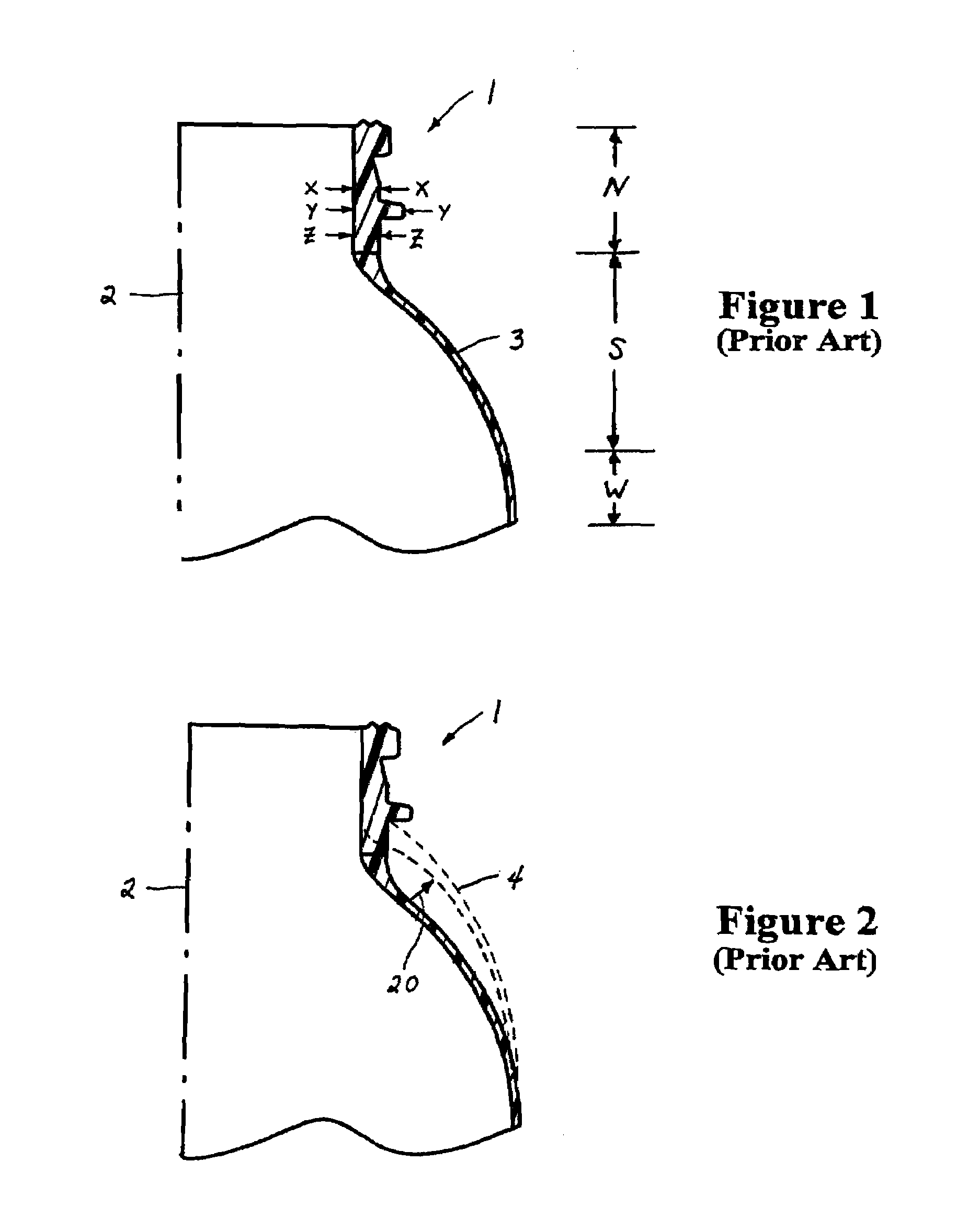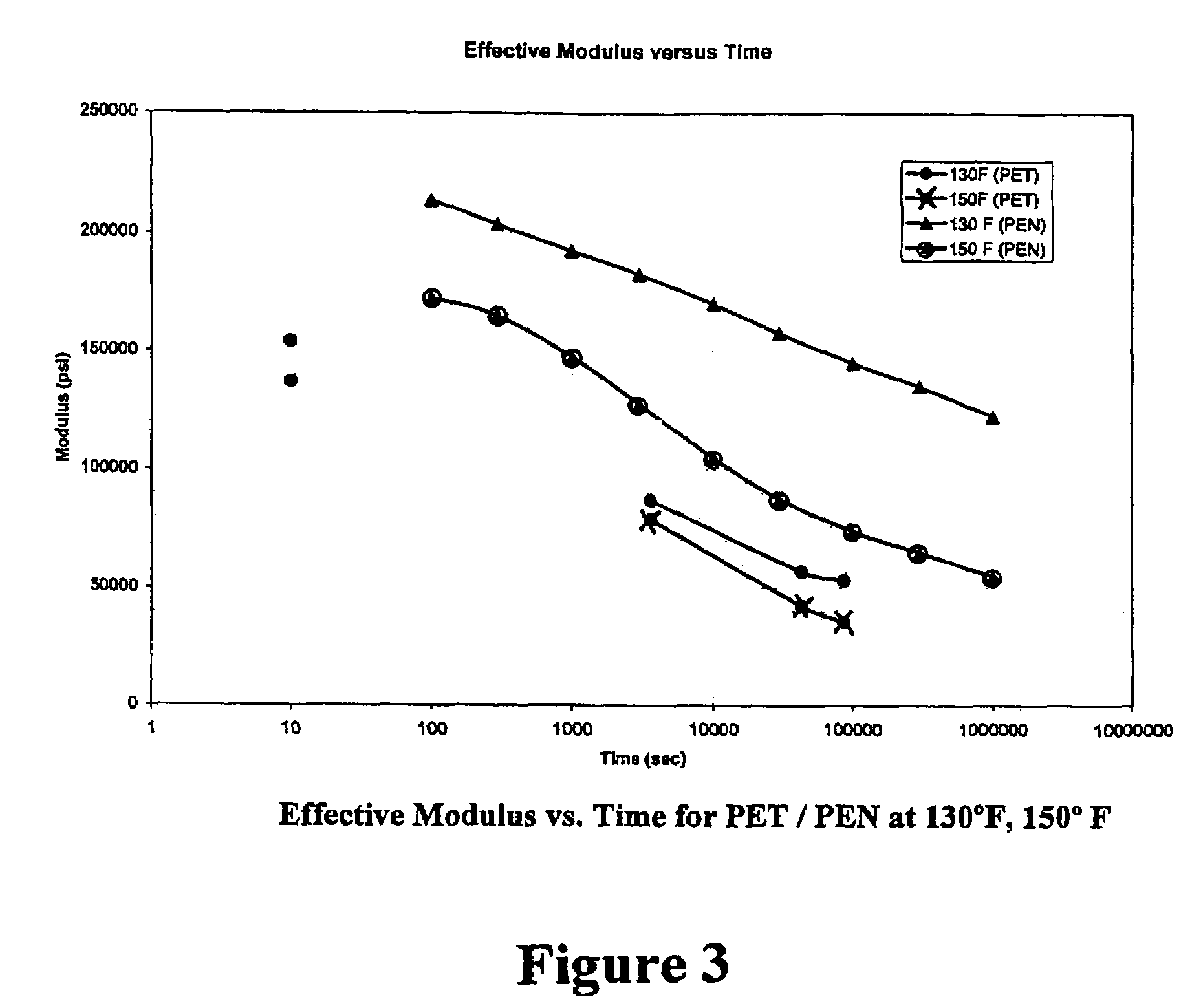Pressurized plastic bottle with reinforced neck and shoulder for dispensing an aerosol
a plastic bottle and aerosol technology, applied in the field of dispensers, can solve the problems of plastic container deformation, container unsightly appearance, plastic container features deformation, etc., and achieve the effect of reducing the external concavity of the container, minimizing the effect of creep deformation over time, and reducing the creep deformation
- Summary
- Abstract
- Description
- Claims
- Application Information
AI Technical Summary
Benefits of technology
Problems solved by technology
Method used
Image
Examples
Embodiment Construction
[0017]Referring now to the drawings, there is illustrated in FIG. 1 a prior art pressure resistant plastic bottle generally designated by the numeral 1 for containing and dispensing an aerosol composition. The plastic bottle 1 comprises a hollow elongate body having a longitudinal axis 2 and an outer wall 3. Bottle 1 may be divided into a plurality of regions or portions, namely, a neck portion N, a shoulder portion S, a waist portion W, a generally cylindrical elongate body portion (not shown) and a closed bottom portion (not shown). Each of these portions is integral with the other and is formed as a one-piece construction. Bottle 1 is designed to contain an aerosol composition (not shown) which is typically pressurized at an internal pressure of from about 275.8 kPa (40 psi) to about 620.5 kPa (90 psi). Examples of typical aerosol compositions are insecticides, insect repellants, hair sprays, air fresheners, cleaning preparations, and shave preparations including foams and gels.
[...
PUM
 Login to View More
Login to View More Abstract
Description
Claims
Application Information
 Login to View More
Login to View More - R&D
- Intellectual Property
- Life Sciences
- Materials
- Tech Scout
- Unparalleled Data Quality
- Higher Quality Content
- 60% Fewer Hallucinations
Browse by: Latest US Patents, China's latest patents, Technical Efficacy Thesaurus, Application Domain, Technology Topic, Popular Technical Reports.
© 2025 PatSnap. All rights reserved.Legal|Privacy policy|Modern Slavery Act Transparency Statement|Sitemap|About US| Contact US: help@patsnap.com



